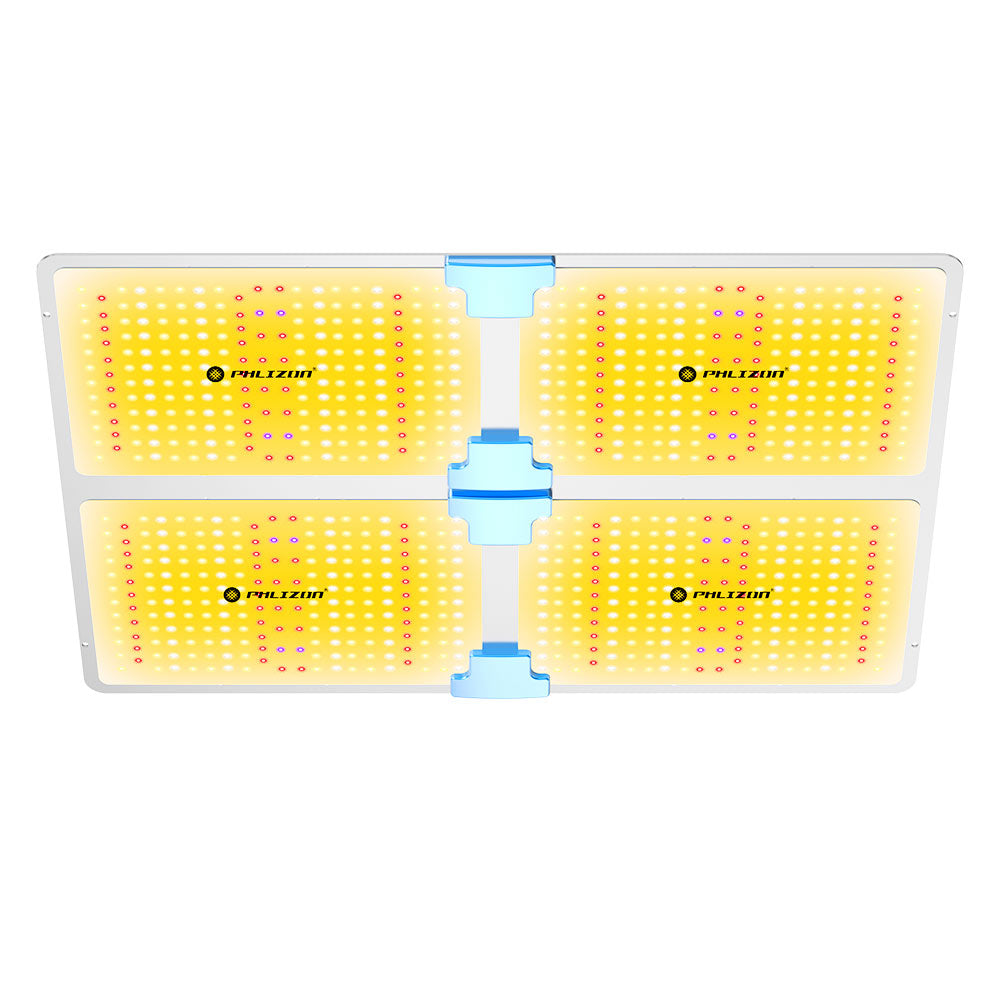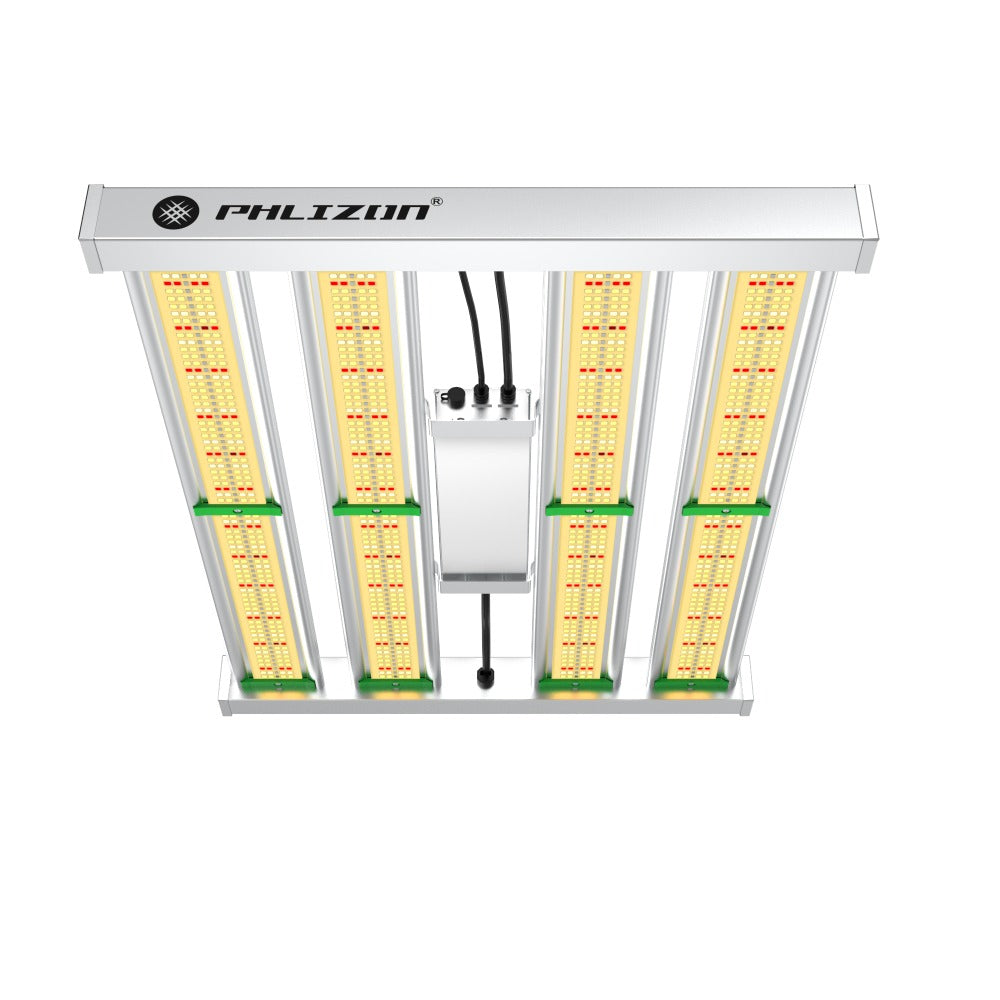Menu
How to Clean and Care for LED Grow Light Fixtures?
LED grow lights are an essential tool for indoor gardening, providing the necessary light spectrum to support plant growth from seedling to maturity. However, maximizing their lifespan and effectiveness requires proper care and maintenance. Dust, dirt, and grime can accumulate over time, reducing light output and potentially damaging the fixtures. This article compiles practical, expert-backed advice on how to clean and care for LED grow light fixtures, ensuring they remain efficient and your plants thrive.
Why Cleaning and Maintaining LED Grow Lights Matters
Proper maintenance of your LED grow lights can significantly improve their performance, extending their lifespan and ensuring that your plants receive the best possible light. While these lights are an investment, keeping them clean and well-maintained will help you get the most out of them, save energy, and ultimately contribute to better crop yields. Over time, dust accumulation, light degradation, and other factors can reduce the effectiveness of your LED grow lights. This not only impacts plant photosynthesis but can also drive up energy costs and accelerate equipment wear. Regular maintenance helps to extend the lifespan of your lights, keeping them efficient and cost-effective while providing your plants with quality light.
From dust to soil to foliar sprays to pesticides, our grow lights can get dirty fast. And when you aren’t regularly cleaning them, not only are you not getting your money’s worth, you’re jeopardizing the health of your lights and garden. Dirty lights can cause excessive heat buildup, increasing the risk of fire. Even if your lights are high-quality, failing to clean them can lead to overheating. Keeping your LED grow lights clean reduces the risk of safety hazards, providing a safer environment for both your crops and your home or growing space.
Besides their incredible efficacy, the lifespan of LEDs dwarfs other grow lamps, lasting decades where they often last for a handful of months. LEDs are sensitive to high temperatures, making thermal management very important. But not only can dirt/dust/gunk buildup hurt their ability to deliver light to your plant, it can also cut their lifespan short. By cleaning your lights regularly, you can ensure that they emit up to 20% more light, which directly benefits plant growth. Cleaner lights produce more light while using the same amount of electricity, giving you more bang for your buck.

Tools You’ll Need
Having the right cleaning tools to get the job done is very important. In most cases, isopropyl alcohol or topical alcohol is the safest cleaner. And strong cleaning solutions can even damage the outer layer of the lamp. Please pre-test a small part of the light to make sure your cleaner will not damage it. You’ll also need:
- A soft microfiber cloth or cotton linen cloth to avoid scratching delicate surfaces.
- Isopropyl alcohol (99% recommended) or a mild window cleaner for stubborn dirt.
- Compressed air or an air duster for removing loose debris.
- Cotton swabs for tight spaces.
- Gloves (optional) to protect your hands and avoid transferring oils to the diodes.

Step-by-Step Cleaning Process
Here’s how to clean your LED grow light fixtures effectively, based on tried-and-true methods from seasoned growers:
Step 1: Safety First
Before cleaning any part of your lighting fixture, always ensure they are unplugged, and the lights have cooled to ambient temperature. Avoid the burns and electric shocks that sometimes occur when you touch an open light fixture. This step is non-negotiable—safety comes first.
Step 2: Wear Protective Gear
It is recommended to wear goggles, even a simple pair of cheap sunglasses. Because you have not cleaned your LED grow light for a while, there may be a lot of dust that can irritate your eyes and respiratory tract.
Step 3: Remove Loose Debris
Use low-pressure compressed air to remove dust and/or debris between the heat fins on the driver housing and/or LED modules. All you need is an air duster or canned air to remove them. This product allows you to remove all the particles without wetting the lights or going through the hassle of disassembling them. Do remember to turn off and unplug before you start spraying away.
Step 4: Wipe Down the Surface
For the light board on the grow lights, you can use a fan to blow off the dust on the surface of the light board. And then you can use a soft cloth to wipe off the remaining dust to keep your LED light clean and shiny. Gently wipe the luminaire housing down with a dry or slightly damp cloth. Take care not to apply too much pressure, as this could damage the delicate components of the LED lights.
Step 5: Tackle Stubborn Grime
Using isopropyl alcohol for completely cleaning the grow lights is important. It is highly effective in its performance, and due to this reason, it removes the dirt and debris on these lights impressively. Lightly dampen a clean, soft cloth with isopropyl alcohol and gently wipe the surface. For some LEDs with silicone coatings, avoid alcohol as it may damage the coating instead if unsure. Standard glass cleaners are perfect for cleaning the glass under the LED lights. Spray some glass cleaner into a soft lint-free cloth and gently wipe the surface. Carefully rub all the dirt away, but do not leave the cleaner on longer than three minutes.
Step 6: Clean the Lens or Glass Cover
Add a layer of window cleaner for the glass cover on LED grow lights and wipe it with a soft cotton linen cloth. To remove limescale buildup on the LED lens, lightly dampen a clean, soft cloth with a vinegar and water solution (1:100 ratio). In addition, cotton swabs are very convenient for restricted areas that the towel cleaning missed.
Step 7: Dry Thoroughly
Let them sit for 30 minutes to an hour to ensure until all residual moisture is gone, and reinstall. Allow it to dry before plugging it back in. Make sure all the components are in place before plugging the lights, and if not, then reassembling them is important to avoid problems.
Step 8: Final Inspection
Before putting the weed lighting back in place, check the fixture for any loose screws, failed grommets, etc. This can be a great time to make a thing of it, going over your entire grow room (fans, surge protectors, etc.). Take the time to vacuum and wipe down your tent, as this will save you time in the long run as you won’t need to clean your lights as aggressively.

Maintenance Tips for Longevity
Cleaning is just one part of the equation. To keep your LED grow lights in top shape, follow these care practices:
- Handle with Care: Always use gloves or a cloth when handling the diodes or circuit components to avoid damage from oils on your skin. Avoid touching the bulbs, diodes, PCB board, or any other circuit components with your bare hands or any sharp object. For thinner LED fixtures like, refrain from bending them or applying moderate pressure.
- Check the Cooling System: LED grow lights, though low in heat output, still generate some warmth. Ensure the lights have sufficient airflow, free from obstructions, to aid heat dissipation.
- Store Properly: When not in use, store your light in a location sealed off from dust and high-traffic areas. Steer clear of hot and humid conditions since these can harm internal electronics and reduce LED lifespan.
- Avoid Overuse: Don’t leave your grow lights on all the time because plants need to have a balance between light and darkness to develop properly. Adjust exposure times based on the growth phase—for example, provide seedlings with 12-14 hours of light, tweaking as plants mature.
- Use a Stable Power Supply: A stable power source reduces the risk of voltage fluctuations that can damage LED components. Pair your lights with a compatible, regulated power supply to enhance stability and avoid power overload.
What to Avoid
- Never use invasive cleaning agents on the lights as these can strip off their material and can damage the internal sensitive components as well. Avoid using cleaners with chloroethylene or acetone because these products will cause the LEDs to fade.
- Avoid using a pressure washer on grow lights, as these can easily break due to excess pressure. It will be better to cover the lights to prevent the seeping of water into them that can cause short circuits and electrical failures.
- Avoid moisture contact to prevent short-circuiting, and if in a humid environment, use a dry cloth or alcohol-based wipes to prevent condensation.
- Avoid pulling on wires or making any electrical fixes on the lights when they are plugged in.
Seasonal Considerations
Different times of the year can present unique challenges for LED grow lights, particularly in environments with fluctuating temperatures and humidity. During rainy or high-humidity seasons, the risk of moisture damage to LED lights increases. Ensure adequate ventilation and, if necessary, install a dehumidifier in the grow area. For additional protection, use sealed LED units to prevent water intrusion. In summer, LED lights need extra cooling to counter the external temperature increase. Ensure the lights have sufficient airflow to avoid overheating.
FAQs: Common Questions Answered
Q: How often should I clean my LED grow lights?
A: It’s best to clean them every few months or after each harvest cycle. If you notice visible dust or reduced light output, clean them sooner. Regular upkeep prevents buildup and keeps them efficient.
Q: Can I use water to clean my LED grow lights?
A: No, avoid direct water contact. Water can seep into the fixtures and cause short circuits. Stick to dry cloths or slightly damp ones with isopropyl alcohol, ensuring everything dries completely before use.
Q: What’s the safest cleaning agent for LED grow lights?
A: Isopropyl alcohol (99%) is widely recommended because it evaporates quickly and effectively removes grime without damaging components. Window cleaner works too, but check your manufacturer’s guidelines first.
Q: How can I tell if my LED grow lights need cleaning?
A: Look for dust buildup, dimming light, or uneven plant growth. If your plants aren’t thriving despite proper care, dirty lights might be the culprit. A quick inspection usually reveals the issue.
Q: Will cleaning extend the life of my LED grow lights?
A: Yes, regular cleaning prevents overheating and maintains efficiency, which can add years to their lifespan. Neglecting maintenance, on the other hand, accelerates wear and tear.
Q: Can I touch the LEDs with my bare hands?
A: It’s not ideal. Oils from your skin can damage the diodes over time. Use gloves or a cloth when handling them to keep them in top condition.
Featured blog
- Choosing a selection results in a full page refresh.


















